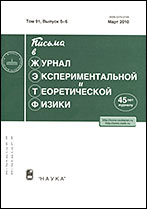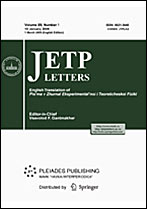|
|
Pis'ma v Zhurnal Èksperimental'noi i Teoreticheskoi Fiziki, 2003, Volume 78, Issue 11, Pages 1203–1206
(Mi jetpl2678)
|
|
|
 |
This article is cited in 9 scientific papers (total in 9 papers)
GRAVITY, ASTROPHYSICS
Dark matter from $\mathbf{SU(4)}$ model
G. E. Volovikab
a Low Temperature Laboratory, Helsinki University of Technology
b L. D. Landau Institute for Theoretical Physics, Russian Academy of Sciences
Abstract:
The left-right symmetric Pati-Salam model of the unification of quarks and leptons is based on $SU(4)$ and $SU(2)\times SU(2)$ symmetry groups. These groups are naturally extended to include the classification of families of quarks and leptons. We assume that the family group (the group which unites the families) is also the $SU(4)$ group. The properties of the fourth-generation of fermions are the same as that of the ordinary-matter fermions in first three generations except for the family charge of the $SU(4)_F$ group: $F=(1/3,1/3,1/3,-1)$, where $F=1/3$ for fermions of ordinary matter and $F=-1$ for the fourth-generation fermions. The difference in $F$ does not allow the mixing between ordinary and fourth-generation fermions. Because of the conservation of the $F$ charge, the creation of baryons and leptons in the process of electroweak baryogenesis must be accompanied by the creation of fermions of the 4-th generation. As a result the excess $n_B$ of baryons over antibaryons leads to the excess $n_{4\nu}=N-{\bar N}$ of neutrinos over antineutrinos in the 4-th generation with $n_{4\nu}= n_B$. This massive neutrino may form the non-baryonic dark matter. In principle the mass density of the 4-th neutrino $n_{4\nu} m_{N}$ in the Universe can give the main contribution to the dark matter, since the lower bound on the neutrino mass $m_N$ from the data on decay of the $Z$-bosons is $m_N>m_Z/2$. The straightforward prediction of this model leads to the amount of cold dark matter relative to baryons, which is an order of magnitude bigger than allowed by observations. This inconsistency may be avoided by non-conservation of the $F$-charge.
Received: 16.10.2003
Revised: 24.10.2003
Citation:
G. E. Volovik, “Dark matter from $\mathbf{SU(4)}$ model”, Pis'ma v Zh. Èksper. Teoret. Fiz., 78:11 (2003), 1203–1206; JETP Letters, 78:11 (2003), 691–694
Linking options:
https://www.mathnet.ru/eng/jetpl2678 https://www.mathnet.ru/eng/jetpl/v78/i11/p1203
|


| Statistics & downloads: |
| Abstract page: | 189 | | Full-text PDF : | 70 | | References: | 65 |
|





 Contact us:
Contact us: Terms of Use
Terms of Use
 Registration to the website
Registration to the website Logotypes
Logotypes







 Citation in format
Citation in format 
